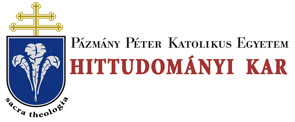Folia Theologica et Canonica 6. 28/20 (2017)
IUS CANONICUM - Szabolcs Anzelm Szuromi, O.Praem., Historical development of the aggravating and extenuating circumstances in the canonical penal law
HISTORICAL DLVELOPMENT OF THE AGGRAVATING AND EXTENUATING... 243 2) whether the capable perpetrator's act was realized with any releasing circumstances (eximitur a poena) or not; 3) there were deliberated those circumstances which could augment (aggravarlo) the act of the perpetrator. Among these three principals we cannot find the so called extenuating circumstances. Nevertheless, it does not mean that this category did not exist even from the most important patristic sources, particularly in St. Augustine’s writings. It shows only, that the inteipreting concept had differed from the system of the modern penal structure. We could see a long list of concrete examples of those characteristics of circumstances which were classified basically into eight categories, and these reduced the legal - or canonical - culpability of the concrete - penalized - acts. These supplementary circumstances had been derived from the releasing circumstances. Therefore, the extenuating circumstances were those characters of the penalized act, when - based on some objective-, subjective-, or juridical aspects - the releasing circumstances could not be complete. Based on this description we can understand the classical name of the extenuating circumstances, i.e. "de causis quae minuunt delictum” (those cases which reduce the delict). II. The “fontes formales” and the primary authors Analyzing the principal sources of the canonical system with particular attention to the circumstances, psychical, physical conditions of the perpetrator and imputably of his action, we can find descriptions and definitions - beside our earlies sources, which are the Council of Elvira (around 300: Can. 4)n, Council of Ancyra (314: Cann. 11 and 22) and Council of Neocaesarea (between 314 and 319, possibly in 315: Can. 6) in the writing of the most important classical patristic authors, namely St. Ambrose (t397), St. Augustine (1‘430), and St. Gregory the Great (t604). Turning our attention to the single sources, can be iden- 11 11 Szuromi, Sz. A., A keleti egyházfegyelem befolyása a korai magyar zsinatokon, in Erdő, P. (ed.), Tanulmányok a magyarországi egyházjog középkori történetéről (Bibliotheca Institua Postgra- dualis Iuris Canonici Universitatis Catholicae de Petro Pázmány nominatae III/3), Budapest 2002. 143-153. Concerning the contents of the Council of Elvira's text, several scholarly opinions have arisen because the various manuscript traditions of its acts. Based on these considerations is possible that only the first 21 canons were issued by the original council and the further canons were added later by other Hispanic councils. See Laeuchli, S.. Sexuality and Power. The Emergence of Canon Law at the Synod of Elvira. Philadelphia 1972. Hess, H., The Early Development of Canon Law and the Council ofSerdica, Oxford 2002. 40-42. Sotomayor, M. - Berdugo, T„ Valoración de las actas, in Sotomayor, M. - Urbina, J. F. (ed.), El Concilio de Elvira y su tiempo, Granada 2005. 94-114. According to other opinion, the Council of Elvira could be only a collection of early Hispanic conciliar canons, cf. Meigne, M., Concile ou collection d’Elvire, in Revue d'histoire ecclésiastique 70 (1975) 361—387. Martinez, S. J., Nuevos concilias hispano-romanos de los siglos III y IV. Dt coleccion de Elvira, Malaga 1987.
